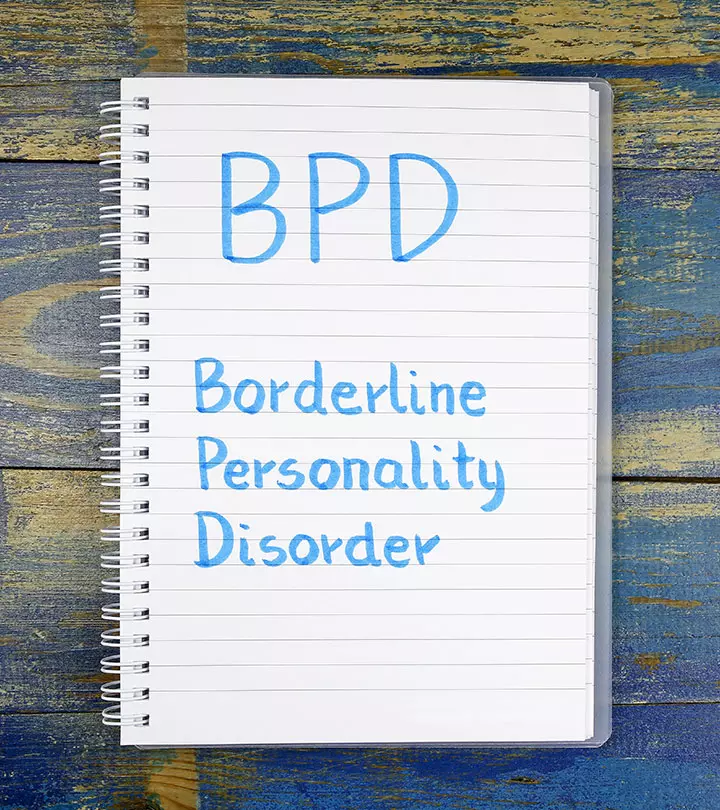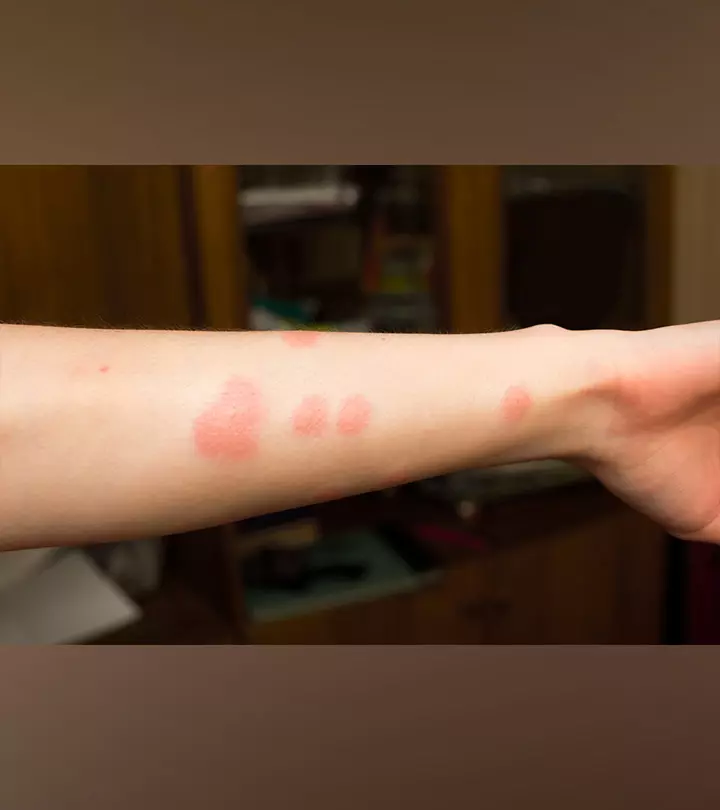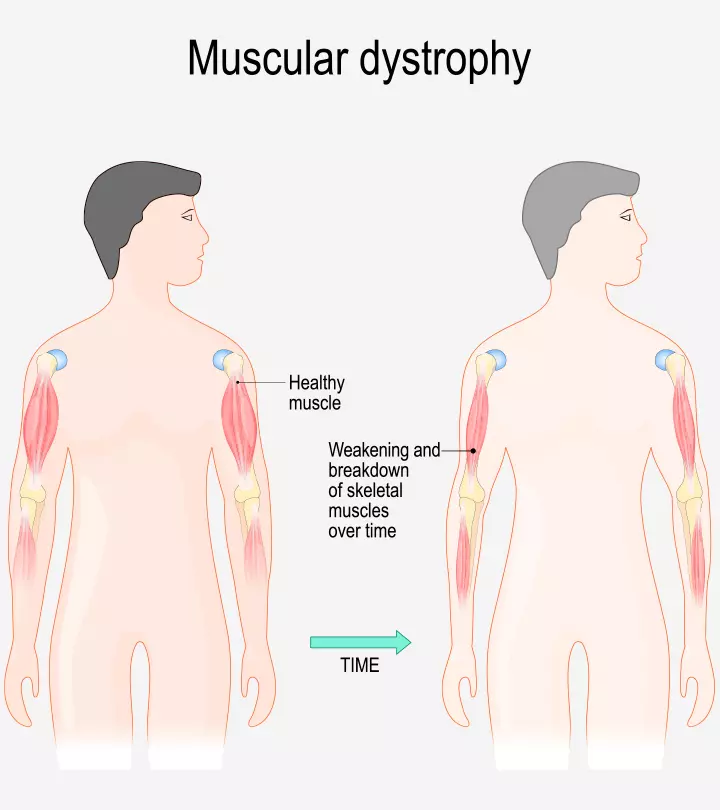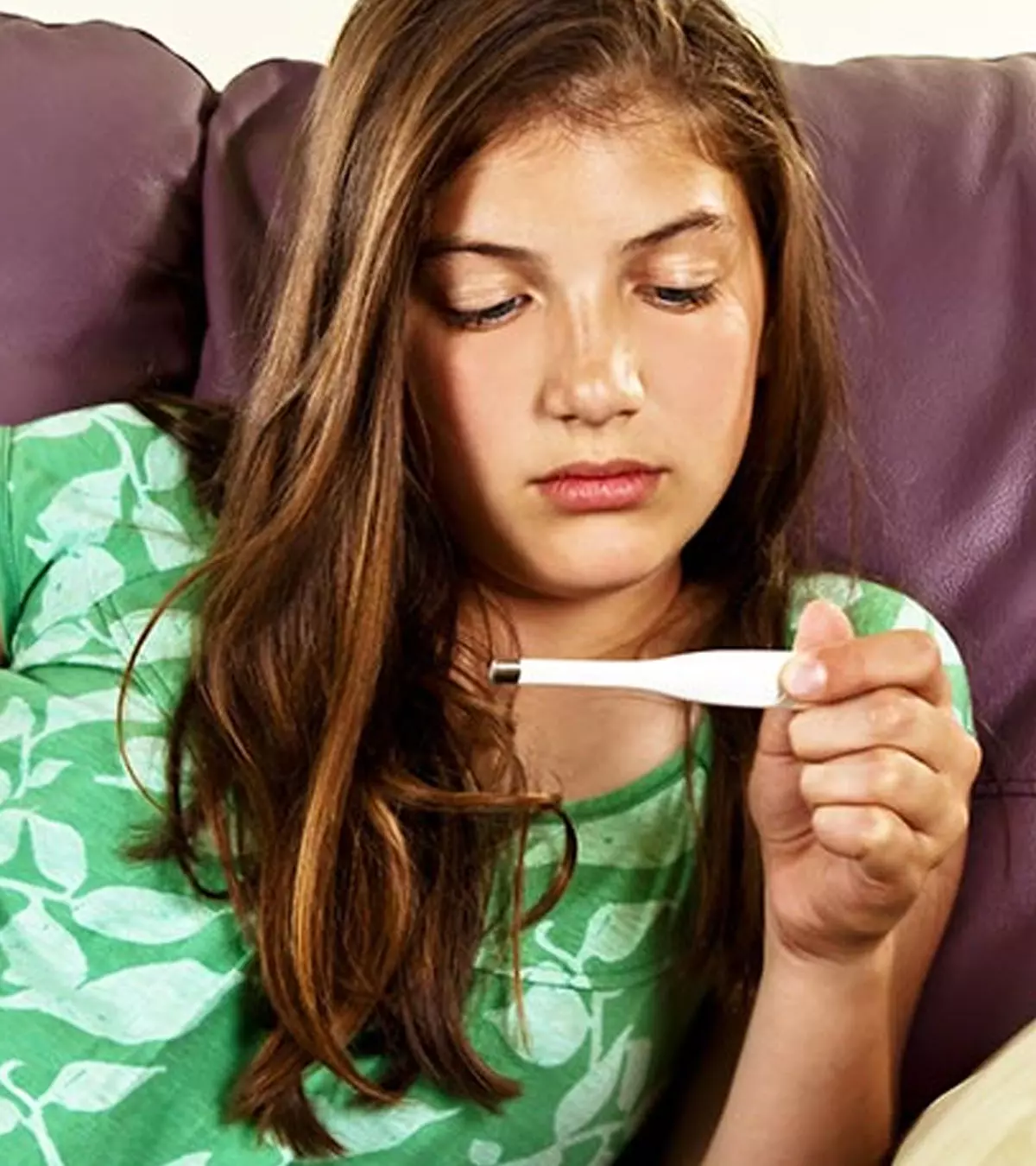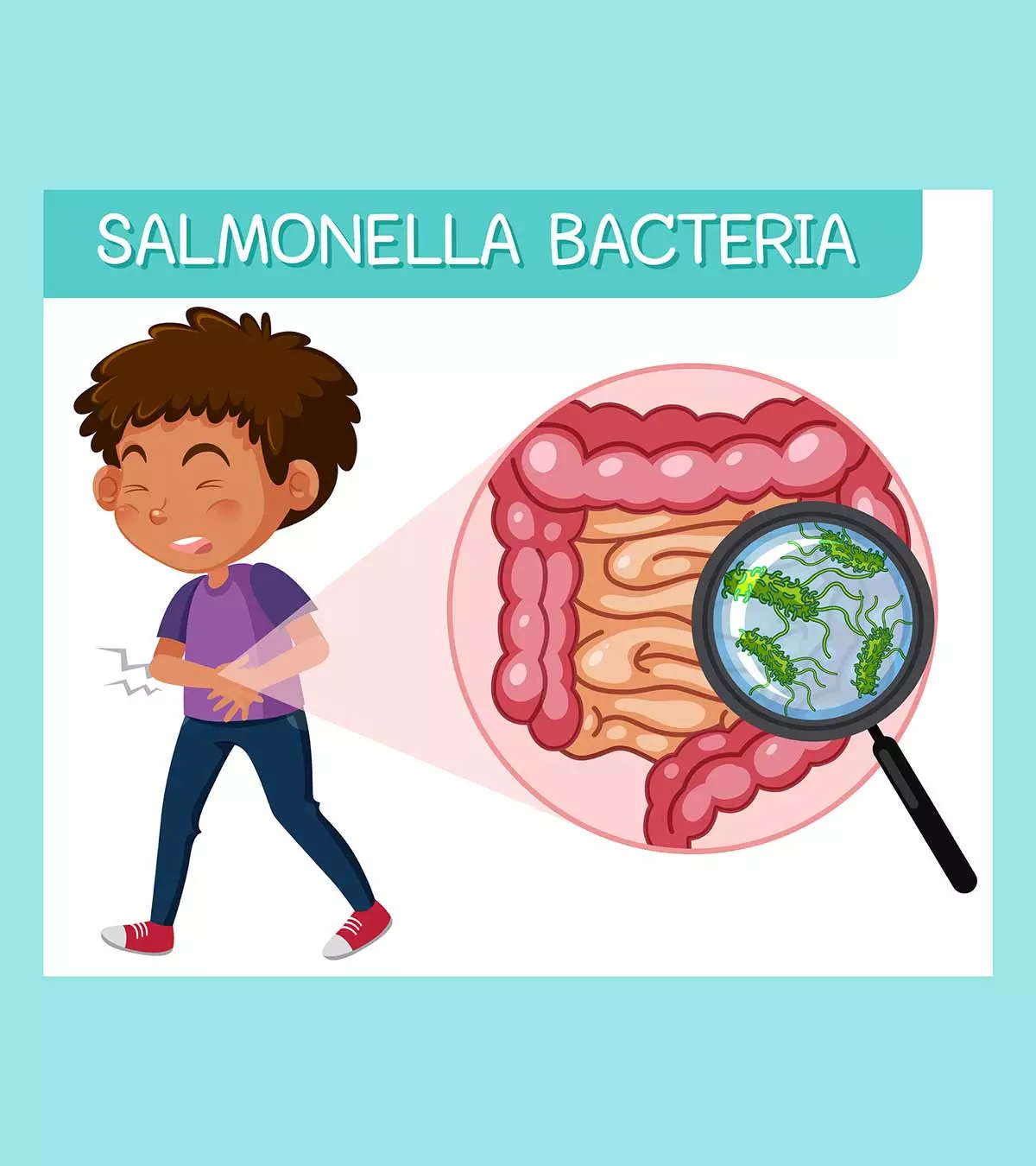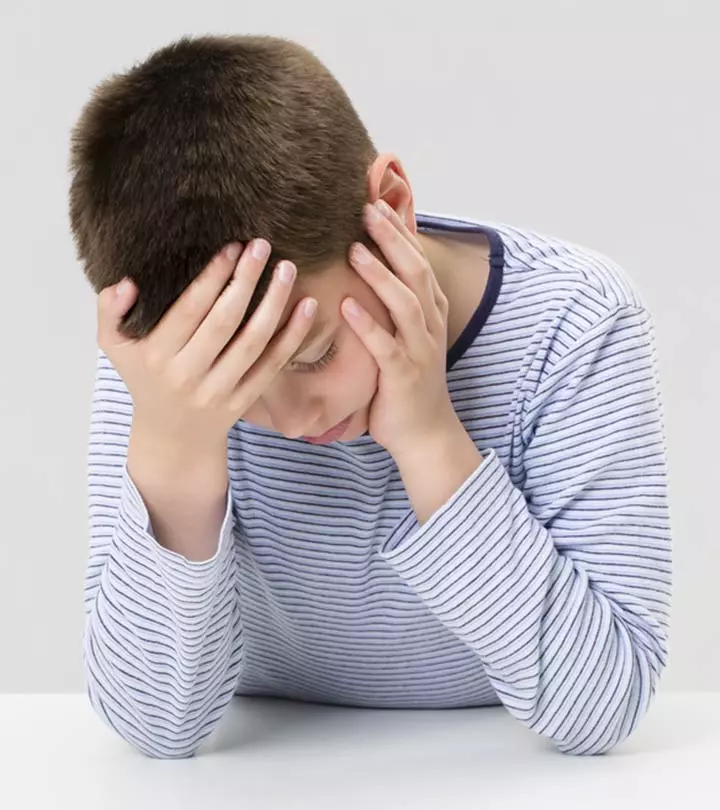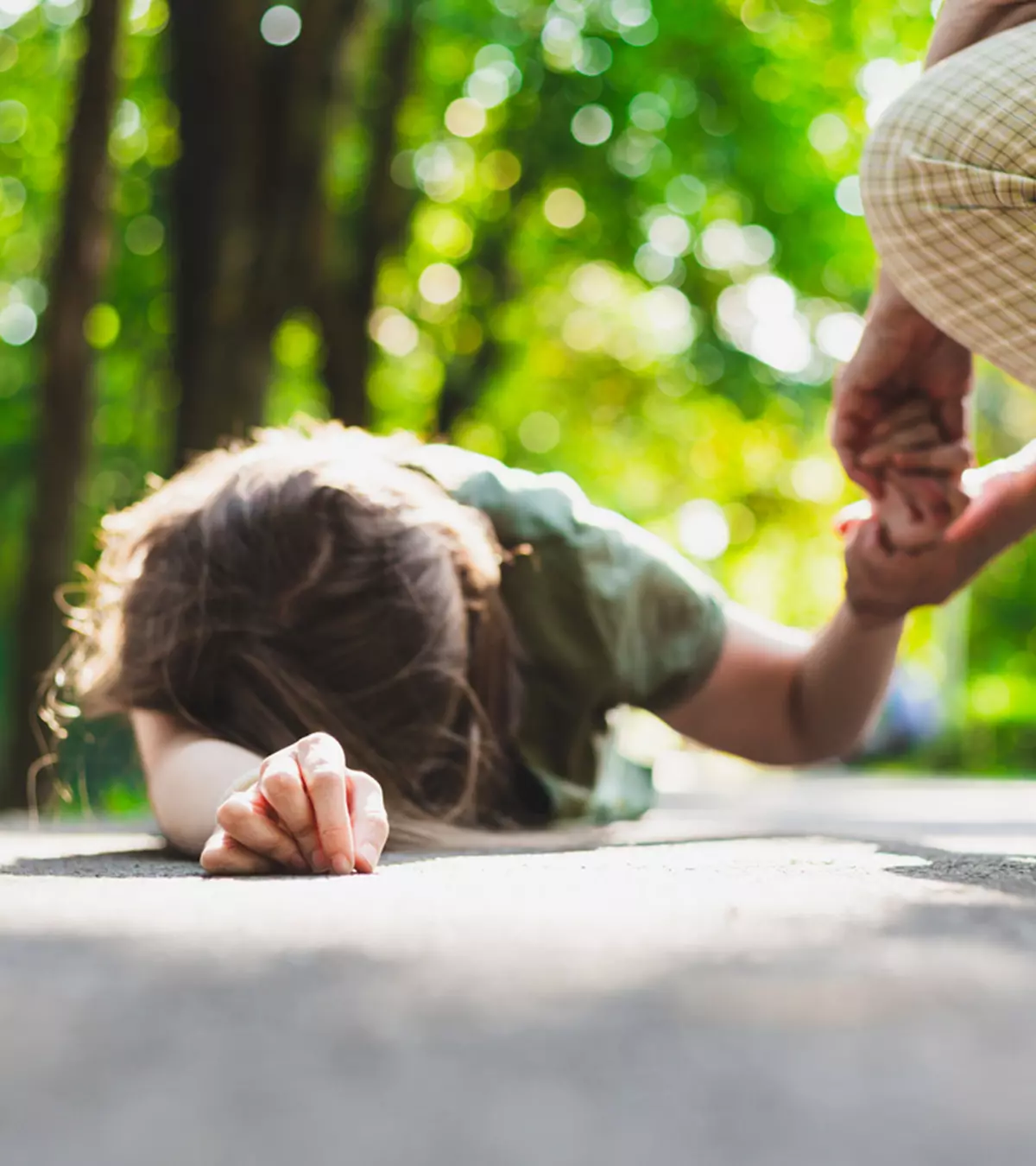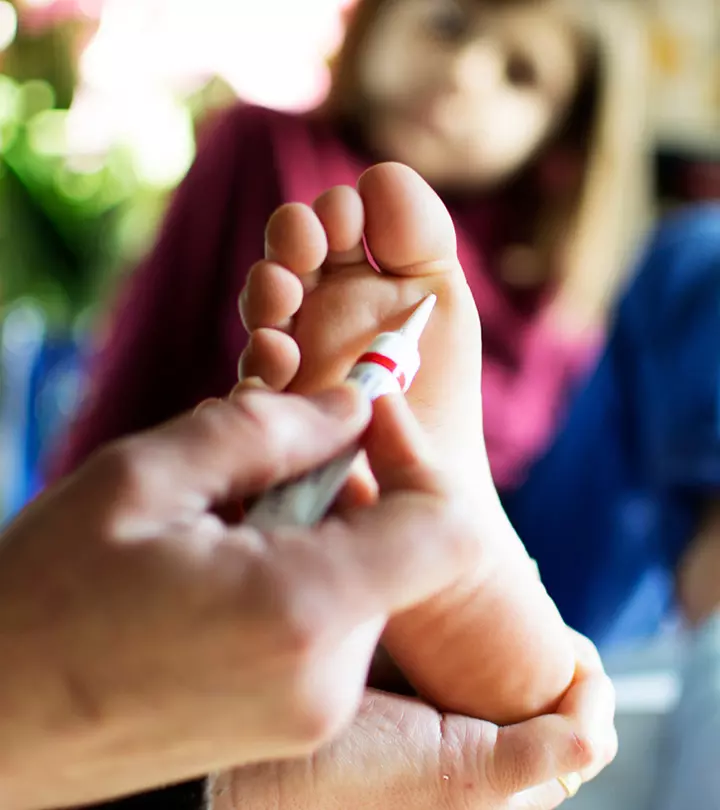
Image: Shutterstock
Warts are skin growths that develop on different body parts and are caused by the human papillomavirus (HPV). They are harmless but are contagious and spread easily. Warts on kids usually occur on hands, feet, and fingers and spread out to other bodily parts. However, they can also occur in adults. According to a StatPearls publishing by the National Library of Medicine, warts are prevalent among 10% to 20% of school-aged children around the world.
Learn about the several causes, symptoms, and treatment options and how to avoid spreading warts on kids.
Key Pointers
- Human papillomavirus (HPV) is the main cause of warts in children, and different HPV causes different warts.
- The virus is highly contagious and spreads when a child touches an infected surface or person.
- Symptoms of a wart vary depending on the type of wart, and most children with warts could be asymptomatic.
- Warts usually resolve on their own within a few weeks or months, but if they don’t, consulting a doctor is vital to know the right treatment course.
- Maintaining proper hygiene, abstaining from scratching warts, and avoiding sharing clothes are a few ways that could help prevent warts.
What Causes Warts In Children?
Children get warts on their skin when they are infected by HPV. Different types of papillomaviruses cause different types of warts. Children could get warts when they come in contact with the virus in the following ways (1) (2).
- Touching an infected person
- Using objects that have been touched by an HPV-infected person
- Touching surfaces or floors that have the virus from another infected person
- Staying barefoot in public places, such as locker rooms
 Point to consider
Point to considerAre Warts In Children Contagious?
Warts are contagious since they are caused by a virus. They usually spread via skin-to-skin contact or when a child touches an object or surface that has been contaminated by an infected person. Scratching an existing wart and then touching healthy skin could spread the wart to other parts of the body.
The chances of contracting the HPV virus and developing a wart are higher if your child has a cut or an open wound (1). Children with weak immune systems may usually have a higher risk of developing warts.
What Are The Different Types Of Warts Found In Children?
Warts can be of different types, and each may cause varied symptoms in children (2).
1. Common warts
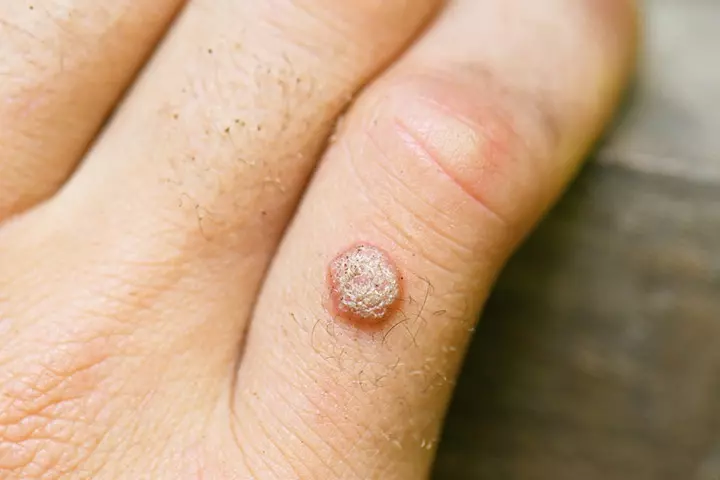
Image: Shutterstock
These warts have a rough surface and appear grayish-yellow or brown. Common warts can be found on fingers, elbows, knees, and even on the face in children.
2. Palmar and plantar warts
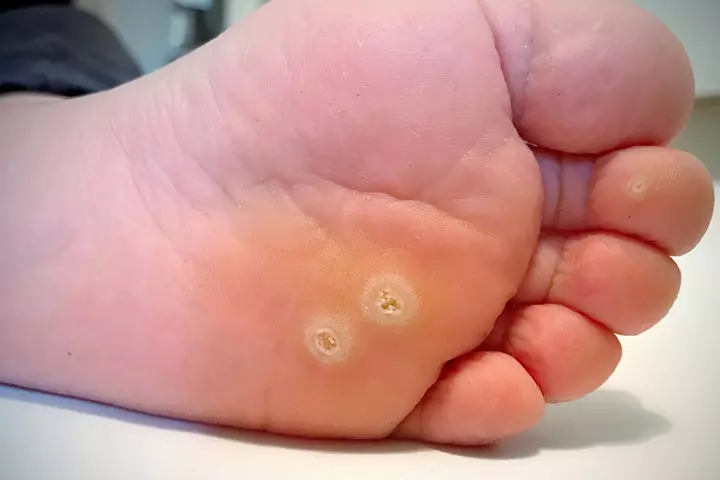
Image: Shutterstock
These warts are called palmar when they occur on palms and plantar (verruca plantaris) when they occur on the soles. They might be painful since palms and soles often experience frequent pressure and friction. A group of plantar warts is called mosaic.
3. Flat warts
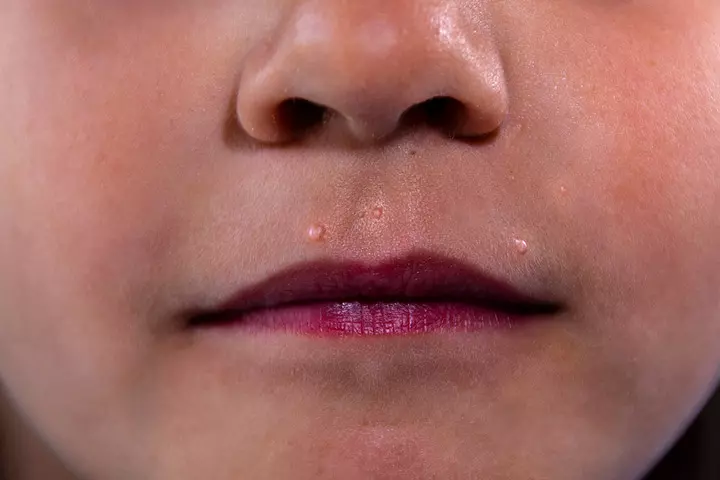
Image: Shutterstock
These warts are small and appear as smooth skin growths. They are most commonly found on the face but may also appear on other body parts (3).
4. Filiform warts
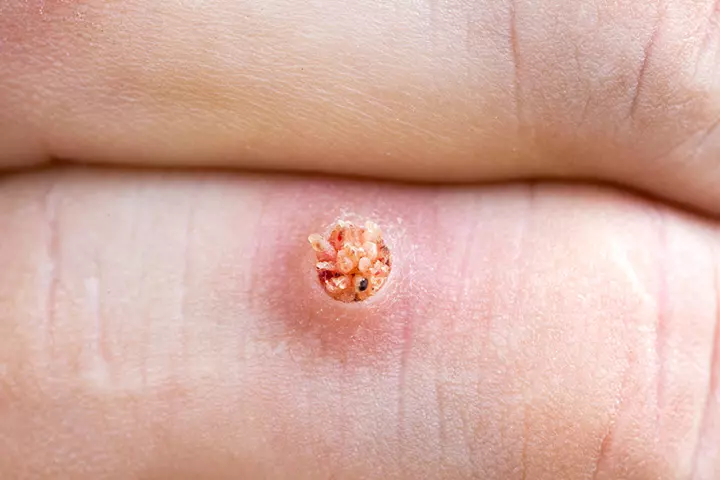
Image: IStock
These are small warts that appear like spikes protruding from the skin. They are commonly found on eyelids, lips, face, and the neck in children.
5. Periungual warts
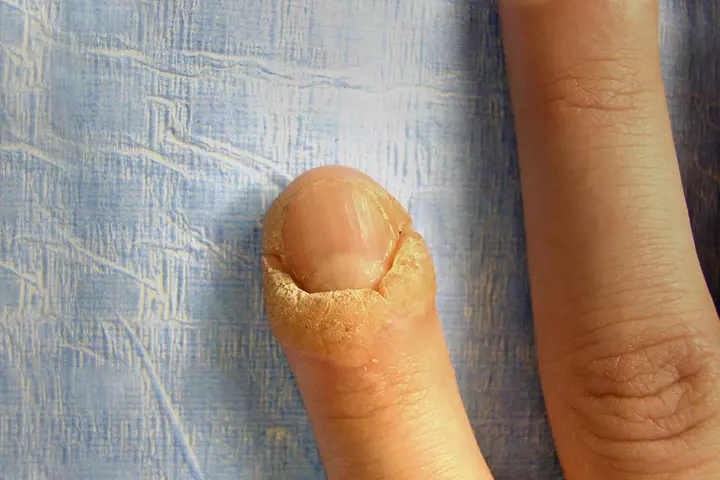
Image: Shutterstock
These are thick warts that usually appear on the skin around the nails. They may cause skin fissures, which can be painful.
What Are The Complications Of Warts In Children?
Warts aren’t just skin blemishes; they are abnormalities that, left untreated for a long time, may spread to other body parts. They may also reoccur if treated late. There might also be a higher risk of spreading warts to others if the child is left untreated for long. Some warts, such as periungual warts, may form deep fissures or cracks in the skin, causing pain and discomfort. High-risk HPV can cause cancerous tumors, specifically carcinomas, once it has infected cells.
 Caution
CautionHow Are Warts In Children Diagnosed?
Most children with warts could be asymptomatic. A healthcare provider may usually diagnose a wart by its physical characteristics and location. In some cases, a small section of the wart is shaved or scraped using a blade for microscopic examination. Scraping the top layer of a wart may reveal black dots, indicating clotted blood (2). Sometimes, warts may need to be differentiated from skin cancer lesions or melanoma in children, and the doctor may suggest additional tests for it.
How Are Warts In Children Treated?
Warts may usually go away by themselves in a few weeks to months. However, if you spot a skin wart on your child, it is best to consult a doctor since the wart may spread to other body parts and other people.
The treatment of skin warts in a child depends on the following factors (2).
- How long the wart has been there
- Location of the wart on the body
- Type of wart
- Number of warts that are growing
The commonly used treatment options for skin warts in children include the following (4) (5).
- Applying salicylic acid (usually at 17% concentration) or other topical irritants on the wart
- Freezing the wart with liquid nitrogen (cryotherapy) as a second line of treatment
- Electrocautery (burning and cutting the wart with an electrocauter)
- Excision or cutting out the wart
- Laser removal of the wart
- Topical treatment with medications containing fluorouracil or dinitrochlorobenzene
Some treatments may cause pain, skin discoloration, or a burning sensation. It is best to ask the doctor about the post-treatment effects on your child.
You may consider getting the treatment done by a Podiatrist at the clinic if you are unsure how to manage it at home. The child is unlikely to feel pain during treatment, and the wart may be gone sooner. A mother shares the experience of having her daughter’s plantar wart removed. She writes, “He (the podiatrist) first uses a razor blade tool and trims down the wart on her foot. Just like when he did this to mine, it doesn’t hurt for my daughter. Next, he applies a small amount of Cantharidin (blister beetle juice) and then puts a tight band-aid over it. Gives us the same instructions as before – leave the Band-Aid and Cantharidin on for 8 hours if possible but no less than 4…Only 1 week and my daughter’s plantar wart was gone (i).”
Some of these treatments may cause pain, skin discoloration, or a burning sensation. It is best to ask the doctor about the post-treatment effects on your child.
What Are The Home Remedies For Warts In Children?
You may consider home remedies to get rid of warts that are small and painless. Do not try home remedies if the warts are painful, spread across a significant area of the body, or present on the face. Some of the home remedies that you may consider for warts in children are the following.
1. Salicylic acid
You can use over-the-counter 17% salicylic acid through the following steps.
- Soak the wart in warm water for five minutes.
- Scrub or file the dry, dead skin over the wart with a nail file or a pumice stone. Ensure that you use the nail file or pumice stone exclusively for the wart.
- Dry the feet. Apply 17% salicylic acid to the wart using the applicator that came with the salicylic acid bottle. You may apply petroleum jelly (Vaseline) on the skin around the wart to prevent irritation.
- Use a bandage or duct tape to cover the wart for a day (24 hours).
- Repeat this every day or alternate days until the wart has resolved.
Most children usually find relief from this method. Consult a doctor if there is no improvement even after two weeks. Do not use salicylic acid for more than 12 weeks (3).
2. Duct tape
You may use duct tape without salicylic acid to cover the wart in the following way.
- Take a piece of duct tape that is adequate to cover the wart.
- Keep the duct tape on the wart for six days.
- Remove the duct tape and place the wart in warm water for five minutes.
- Use a nail file or a pumice stone to file the wart and leave the wart uncovered overnight.
- Repeat the first three steps in the morning.
- Repeat this process for the next eight weeks or until the wart resolves.
There are several other remedies, such as garlic extract and apple cider vinegar, considered to treat warts in babies and children. However, there is no evidence that these may provide any benefit.
Can Warts Be Prevented In Children?
Despite their contagious nature, warts in children can be prevented. Here are some things your child can do to avoid developing warts (6).
- Maintain good hygiene, such as washing hands for at least 20 seconds with soap and water.
- Avoid sharing clothes and utensils with a family member who has developed warts.
- Teach your child not to touch others’ warts if they go to daycare.
- Wear footwear when visiting public areas, such as locker rooms.
 Point to consider
Point to considerFrequently Asked Questions
1. When should I be concerned about a wart on children?
If the warts are painful, begin to interfere with routine activities, or are causing issues with aesthetics and are embarrassing for the child, you should consult your child’s doctor for a further treatment plan to address these maladies (7).
2. Can vitamin D cure warts?
Topical application of vitamin D3 and intralesional vitamin D3 injections have shown promising results in treating cutaneous and genital warts in adults (8). You may check with your child’s doctor if vitamin D therapy can be helpful for your child.
3. Are over-the-counter wart removal products safe for kids to use?
Over-the-counter wart removal products are safe to use on children. However, it should be applied only to the warts, not the surrounding skin. Furthermore, since certain OTC medicines may not be recommended for younger children, if your child is less than 12 months, consult a doctor before applying the medicine (10) (11).
4. What should I do if the warts on my kid’s skin become irritated or infected?
If you see signs of infection, such as swelling and the appearance of red, brown, purple, or gray color around the warts, contact your doctor immediately before it causes pain to your child. Also, pain and bleeding indicate the medical attention requirement (12).
Warts on kids usually result from an HPV infection, which is an infectious disease, and are contagious. It may spread to different parts of the body or from one person to another. Most warts in children may resolve without treatment, but it is advisable to consult a doctor early to prevent them from spreading. Home remedies may work for small warts that are painless. However, you must seek medical care if your child has multiple warts or their location makes them painful. Warts may be prevented by maintaining proper hand hygiene and avoiding coming in contact with others’ warts.
Infographic: Does Immunotherapy Cure Warts In Children?
Immunotherapy uses a certain part of one’s immune system to fight against warts. Doctors may recommend this treatment if the wart is not responding to regular treatments. Immunotherapy for warts is usually safe and effective. Check out the infographic to know the various types of immunotherapy for warts in children. Illustration: Momjunction Design Team
Learn all about warts and how to prevent them from this video. Get the facts on warts and how to keep your skin healthy.
Personal Experience: Source
MomJunction articles include first-hand experiences to provide you with better insights through real-life narratives. Here are the sources of personal accounts referenced in this article.
i. My plantar wart treatment experience;https://myplantarwart.blogspot.com/2017/10/References
- How to get rid of warts.
https://www.health.harvard.edu/diseases-and-conditions/how-to-get-rid-of-warts - Warts in children.
https://www.hopkinsmedicine.org/health/conditions-and-diseases/warts-in-children - Warts in Children.
https://www.massgeneral.org/children/warts - Michelle M. Lipke; (2006); An Armamentarium of Wart Treatments.
https://www.ncbi.nlm.nih.gov/pmc/articles/PMC1764803/ - Topical Treatments for Skin Warts.
https://www.cochrane.org/CD001781/SKIN_topical-treatments-skin-warts - Pediatric Warts.
https://www.childrensnational.org/visit/conditions-and-treatments/skin-disorders/warts - Warts in Children.
https://www.hopkinsmedicine.org/health/conditions-and-diseases/warts-in-children - Funda Tamer et al.; (2020); Pre-treatment vitamin B12 folate ferritin and vitamin D serum levels in patients with warts: a retrospective study.
https://www.ncbi.nlm.nih.gov/pmc/articles/PMC7063548/#:~:text=Cutaneous%20and%20genital%20warts%20have7%2C11%2D13). - How to heal warts more quickly and prevent new ones.
https://www.aad.org/public/diseases/a-z/warts-heal - Warts.
https://www.rch.org.au/kidsinfo/fact_sheets/Warts/ - Warts in Children.
https://www.hopkinsmedicine.org/health/conditions-and-diseases/warts-in-children - Warts.
https://raisingchildren.net.au/guides/a-z-health-reference/warts#:~:text=You%20should%20take%20your%20child,are%20painful%20or%20bleeding
Community Experiences
Join the conversation and become a part of our nurturing community! Share your stories, experiences, and insights to connect with fellow parents.
Read full bio of Dr. Elna Gibson
Read full bio of Dr. Meenakshi Maruwada
Read full bio of Dr. Ritika Shah
Read full bio of Vidya Tadapatri










